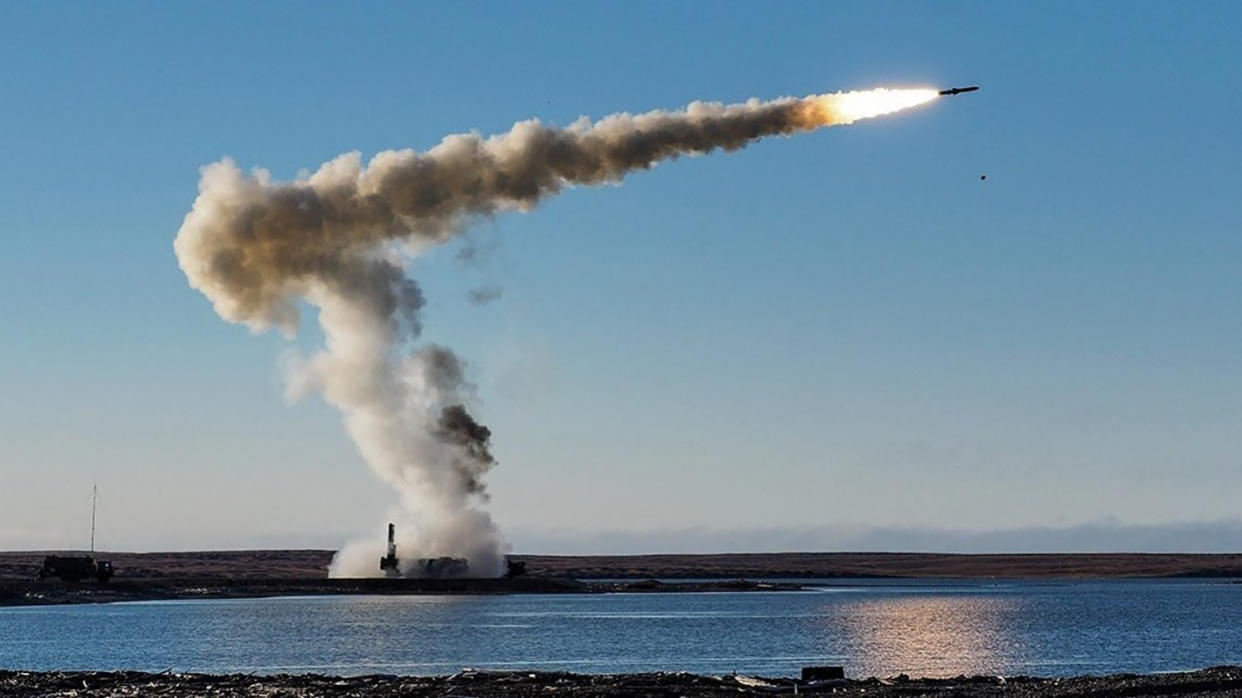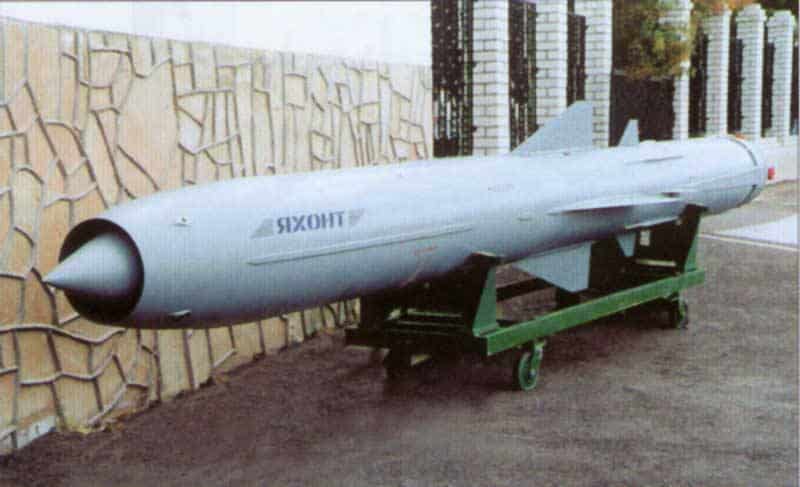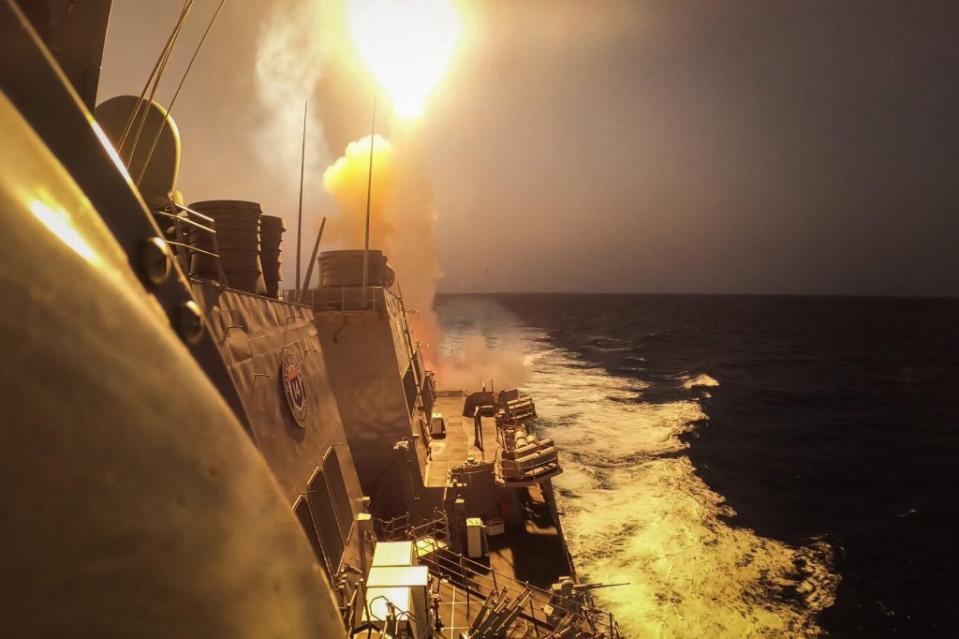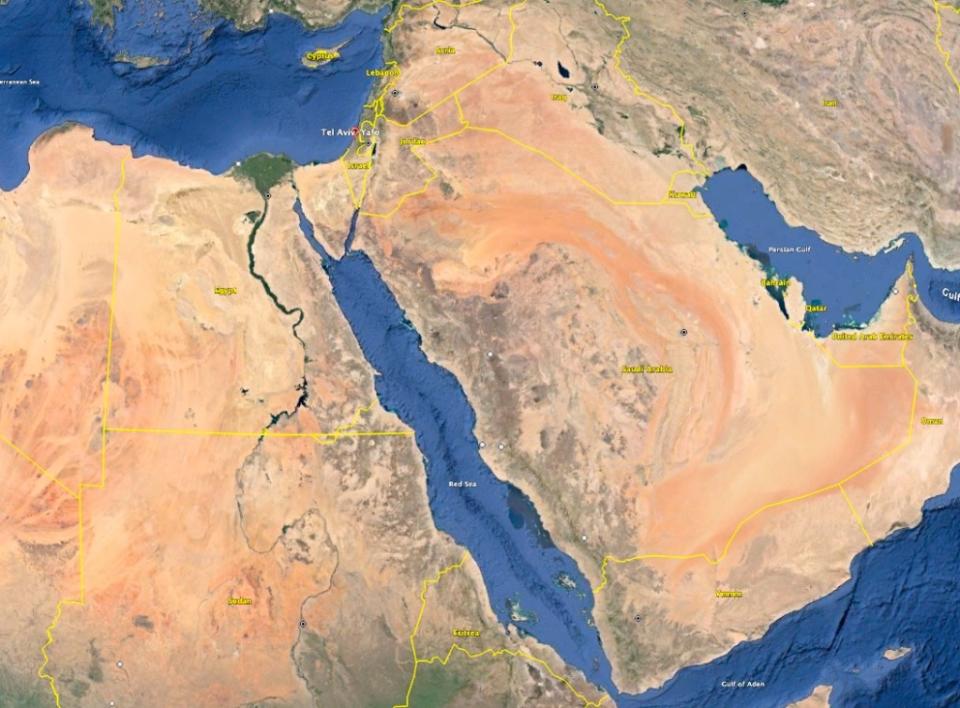Intel Says Russia Looking To Arm Houthis With Anti-Ship Missiles: Report

Russia might arm Yemen’s Houthi rebels with advanced anti-ship missiles in response to Ukraine’s use of American weapons on its territory, U.S. intelligence agencies are warning, according to The Wall Street Journal. The news comes as Israel is threatening to strike Yemen in response to a deadly drone attack on Tel Aviv Friday morning, the first lethal Houthi strike on Israel.
As a result of the new intelligence about a potential Russia-Houthi arms transfer, the White House has “launched a confidential push to try to stop Moscow from delivering the missiles to the Iranian-backed Houthis,” the publication reported. The militants have been attacking shipping in the Red Sea region for eight months claiming solidarity with Palestinians who have been under siege by Israel since the surprise Hamas incursion on Oct. 7.
You can see one recent Houthi missile attack in the video below.
This is how Ukrainian-owned, Polish-operated M/V Verbena cargo ship looks like after Houthi attacks.
Two cruise missiles launched by Yemen’s Houthis struck the ship in the Gulf of Aden, severely injuring one of the crew. pic.twitter.com/UOOmyhGG1u— Clash Report (@clashreport) June 15, 2024
Intelligence about the potential weapons transfer comes after Russian President Vladimir Putin warned last month that he might send very long-range weapons to “regions” to use against Western targets. That statement was in response to the U.S. policy toward Ukraine, which includes allowing the use of long-range weapons just over the border in Russia. Moscow already has several arms sharing agreements with the Houthi’s sponsors in Tehran.
The Houthis already possess a robust anti-ship arsenal, which you can read about here. While most of their missile attacks on vessels have missed the mark, several ships have been damaged and a couple have been sunk outright. New such weapons from Russia would increase their ability to hit sea-going targets. Russia has a wide range of anti-ship missiles it could offer, from subsonic to supersonic types which could threaten U.S. Navy vessels directly. Hezbollah, another Iranian proxy, is thought to have received a handful of Yakhonts, the export version of the supersonic P-800 Oniks anti-ship missile, which poses a serious threat to U.S. and allied warships.

There is growing concern in the U.S. military about the lack of success against the Houthis despite an international effort.
Army Gen. Erik Kurilla, commander of U.S. Central Command, “recently advised in a classified letter to Defense Secretary Lloyd Austin that military operations in the region are ‘failing to deter Houthi attacks on shipping in the Red Sea and that a broader approach is needed,” the Journal reported, citing U.S. officials. A diplomatic effort by the Biden administration to keep Russia from transferring missiles to Yemen “involves using a third country to try to persuade Putin not to join Iran in providing weapons to the Houthis,” according to the publication, citing U.S. officials who declined to identify the country.
In response to the ongoing attacks in the Red Sea region, the U.S. Navy in October began fighting back against the Houthis in what became its most intense warfare at sea in decades. Yet the threat persists.

Ships assigned to the USS Dwight D. Eisenhower‘s carrier strike group (IKECSG) alone fired 155 Standard-series missiles and 135 Tomahawk cruise missiles in operations against the Houthis during a recently concluded nine-month deployment. Aircraft from the strike group launched another 60 air-to-air missiles and 420 air-to-surface munitions in the course of their operations in and around the Red Sea. Collectively, the IKECSG used its various weapons to destroy a bevy of Houthi aerial drones, missiles, uncrewed surface vessels and undersea vehicles, and different kinds of targets ashore.
There have also been attacks by U.S. Air Force land-based manned and unmanned aircraft. Several other nations have contributed to attacks on Houthi assets in Yemen as well as against their missiles, air and sea drones launched against shipping. There are also two international task forces created to protect shipping, the U.S.-led Operation Prosperity Guardian and the European-led Operation Aspides.
Highlighting the growing and as-yet undeterred rebel group’s threat to the region, Tel Aviv is recovering after a deadly Houthi drone attack that killed at least one and injured at least 10 on Friday morning. It was the first time the Houthis carried out a lethal strike on Israel. Israel claimed the attack, which entered Israeli airspace from the Red Sea, was targeting the U.S. Embassy in Tel Aviv, near where the drone actually struck.
Very clear footage of a kamikaze UAV fired by Yemen’s Houthis targeting Tel Aviv overnight, near the United States Embassy Office. pic.twitter.com/nvMTna32YJ
— Clash Report (@clashreport) July 19, 2024
It has been confirmed that tonight's explosion in Tel Aviv was from a drone attack targeting the US Consulate (the Embassy is in Jerusalem). In the first video, you can hear the sound of an engine before the explosion. The white building on the left is the Consulate.
It’s… pic.twitter.com/VXIrKOsU91— Sacha Roytman (@SachaRoytman) July 19, 2024
The Israeli Defense Forces (IDF) acknowledged that the drone evaded air defenses and said an investigation into why is now underway.
Israel’s defense systems apparently picked up the drone but failed to register it as a threat, Israeli military spokesman Rear Adm. Daniel Hagari told reporters, according to The New York Times. Despite Israel’s vaunted integrated air defense system, no air-raid sirens were activated to warn civilians of the attack, the publication reported. You can read more about that system in our deep dive here.
“We are investigating why we did not identify it, attack it and intercept it,” Hagari said.
Israel has downed a number of its own drones too. That underscores serious challenges that air defense forces in the U.S. military also face in telling friendly and hostile drones apart as drones, as well as loitering munitions, become ever more ubiquitous even in operations involving very small units. You can read more about that here.
The Houthis claim the drone was named Jaffa, after the Arabic name for what eventually became Tel Aviv. It was “capable of bypassing interceptor systems and being unable to be detected by radars,” Houthi spokesman Yahya Sare’e stated on Twitter. The Houthis, however, make repeated spurious claims.
بيان القوات المسلحة اليمنية بشأن تنفيذ عملية عسكرية استهدفت هدفا مهماً في منطقة يافا المحتلة ما تسمى إسرائيليا "تل أبيب". بطائرة مسيرة جديدة تحمل اسم " يافا" قادرة على تجاوز المنظومات الاعتراضية ولا تستطيع الرادارات اكتشافها. 19_07_2024م pic.twitter.com/ntxv7pjL3j
— أمين حيان Ameen Hayyan (@ameenhayan) July 19, 2024
Hagari disputed the suggestion that the Houthis created a stealth drone, saying instead it was a variant of the Iranian Samad-3, adapted for long-distance flight. He denied it had capabilities that enabled it to evade Israeli surveillance.
Open source visual evidence compiled by Fabian Hinz, a research fellow on defense and military analysis for The International Institute for Strategic Studies (IISS), pointed to a Samad-3
In a Twitter thread, Hinz displayed several pictures of the drone’s engine and other components that match that drone.
The wing has a high aspect ratio and features relatively small ailerons. One can also see that what we are dealing with is a pretty big UAV. Again, very reminiscent of the Sammad versions we have seen. 6/9 pic.twitter.com/AzfY1LOY6P
— Fabian Hinz (@fab_hinz) July 19, 2024
Regardless of what kind of drone it was, the fact that it traveled some 1,200 miles over the Red Sea from Houthi-controlled territory in Yemen to Israel where it killed a man marks a new and phase in the tumult embroiling the Middle East.

Israeli officials are now considering a strike against the Houthis in Yemen.
“It should not be ruled out that the response will be on Yemeni soil,” Israeli officials said, according to the Israeli Ynet media outlet. That is sparking concerns of wider regional conflict as Israel is already battling Hamas in Gaza and may soon launch an invasion into Lebanon after repeated cross-border missile, rocket and drone attacks by Hezbollah.
As we reported earlier, Iran attacked Israel in April and it is conceivable they could again if their proxies in Lebanon and Yemen come under intense fire. Meanwhile, Russia could be looking to add another dangerous new dimension to the conflict, and in doing so, escalating tensions with the U.S., which have so far played out mostly in Ukraine.
Contact the author: howard@thewarzone

